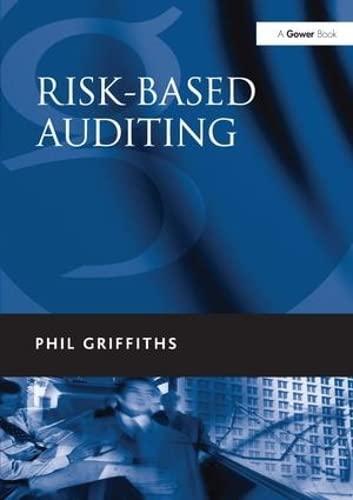Question
Question 3 Rob Roy Corporation has been using its present facilities at its annual full capacity of 10,000 units for the last 3 years. Still,
Question 3
Rob Roy Corporation has been using its present facilities at its annual full capacity of 10,000 units for the last 3 years. Still, the company is unable to keep pace with continuing demand for the product that is estimated to be 25,000 units annually. This demand level is expected to continue for at least another 4 years. To expand manufacturing capacity and take advantage of the demand, Rob Roy must acquire equipment costing $1,000,000. The equipment will double the current production quantity. This equipment has a useful life of 10 years and can be sold for $200,000 at the end of year 4 or $30,000 at the end of year 10. Analysis of current operating data provides the following information:
| Per Unit | |||||||||||
| Sales price | $ | 204 | |||||||||
| Variable costs: | |||||||||||
| Manufacturing | $ | 97 | |||||||||
| Marketing | 10 | $ | 107 | ||||||||
| Fixed costs: | |||||||||||
| Manufacturing | $ | 45 | |||||||||
| Other | 25 | 70 | 177 | ||||||||
| Pretax operating income | $ | 27 | |||||||||
The fixed costs include depreciation expense of the current equipment. The new equipment will not change variable costs, but the firm will incur additional fixed manufacturing costs (excluding depreciation on the new machine) of $250,000 annually. The firm needs to spend an additional $200,000 in fixed marketing costs per year for additional sales. Rob Roy is in the 35% tax bracket. Management has set a minimum rate of return of 15.0% after-tax for all capital investments. Assume, for simplicity, that MACRS depreciation rules do not apply.
Required:
1. Assume that the equipment will be depreciated over a 4-year period using the straight-line method. What effects will the new equipment have on after-tax operating income in each of the 4 years?
2. What effect will the new equipment have on after-tax cash inflows in each of the 4 years?
3. Compute the proposed investments payback period (in years) under the assumption that after-tax cash inflows occur evenly throughout the year. (Round your answer to 2 decimal places.)
4. Compute the accounting (book) rate of return (ARR) based on the average investment. (Round your answer to 2 decimal places.)
5. Compute the net present value (NPV) of the proposed investment. (Use both the built-in function in Excel (NPV) and the tables presented in Appendix C to determine the present value of the after-tax cash flows.) (Round your answer to nearest whole dollar amount.)
6. Compute the internal rate of return (IRR) of the proposed investment using the built-in IRR function in Excel. (Round your answer to 2 decimal places.)
7. Compute the modified internal rate of return (MIRR) of the proposed investment using the built-in MIRR function in Excel. In responding to this requirement, you might find the following sources to be helpful: MIRR Function and/or IRR in Excel). (Round your answer to 2 decimal places.)
8. Management has decided to invest in the new equipment but is unsure of the reliability of some of the estimates and as such has asked some what-if questions. Treat each of the following two cases independently.
a. By how much can the unit variable cost for units produced by the new equipment increase and still justify the purchase of the equipment (i.e., have the investment generate an after-tax IRR of exactly 14%, its cost of capital)? (Do not round intermediate calculations. Round your final answer to 2 decimal places.) (Hint: the present value annuity factor from Appendix C Table 2 for 4 years, 15.00% is 2.855.)
b. The company is anticipating an increase in competition. Management believes that, in response, it will have to reduce the selling price of the product. By how much can the firm decrease the per-unit selling price (for all units sold) and still be able to justify the purchase of the new equipment? What percentage decrease in selling price does this represent? (Round your answers to 2 decimal places.)

Step by Step Solution
There are 3 Steps involved in it
Step: 1

Get Instant Access to Expert-Tailored Solutions
See step-by-step solutions with expert insights and AI powered tools for academic success
Step: 2

Step: 3

Ace Your Homework with AI
Get the answers you need in no time with our AI-driven, step-by-step assistance
Get Started


